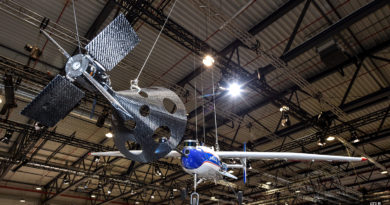UK Drone Rules & Regulations 2020
It is very important to stay up to speed when it comes to the latest drone rules and regulations. Not only are certain rules in place to protect a drone user and the people and places around them whilst actively using a drone, but they are also there to help prevent people from causing any trouble through the use of the device.
This is why we have created this article to help you keep up to date when it comes to the dos and don’ts of drone flying in the UK. Please note that these latest rules cover the new European drone regulations which become active from July the 1st of this year.
Perhaps, we should start by explaining that the new regulations that will replace the current PfCO (Permission for Commercial Operations) and as a result could release more flying possibilities for people.
These changes have been created to align with the European Aviation Safety Agency (EASA), building on the existing Drone and Model Aircraft Registration Scheme in the UK. The PfCO will be replaced by an Operational Authorisation. If a drone user has an existing valid PfCO they can continue to renew with the same provisions that they would currently be accustomed to for the foreseeable future.
Now, these new rules were put together with the viewpoint of being based around the type of drone an owner has and where they choose to fly it, as opposed to the previous rulings, which were based around limitations and ambiguity around commercial and non-commercial drone operations. The rules should benefit various drone users as they would mean they would now be able to fly over people and even get as close as five metres-a big deal regarding certain missions.
There will be three categories of operations to be introduced. They are as follows:
Open Category
Low-risk operations will not require authorisation but they will be subject to strict operational limitations.
Specific Category
Medium risk operations will require the drone operator to have authorisation from the national aviation authority based on a standardised assessment or a specific scenario.
Certified Category
This category regards high-risk operations and classical aviation rules still apply.
It has been stated that any operations that require overflying of people who are not involved do not fall into the Open Category of operations, but rather they’ll fall into the Specific Category of operations and would require an Operational Authorisation. At the time of writing it is still unclear as to what would be required to gain an Operational Authorisation but we do know that it is risk-based and that it has to be granted by the CAA.
These new regulations will replace the current weight classifications of drones from a Small Unmanned Aircraft (SUA) which would weigh between 0-20kg and UAS weighing more than 20kg. Any new drones sold on the open market and intended for use in the Open Category will be marked by the manufactures as complying with one of five classes. These classes will be published in a table.
Another change to the drone classifications will see them now incorporating the Maximum Take-Off Mass (MTOM) maximum speed, sound power level and potential impact energy transference for each drone operated within the Open Category.
Now, in this article, a brief look has been taken regarding the latest on the drone rules and regulations which will begin later this year. It is worth seeking out the fall rules and regulations along with the detailed explanations that we were unable to go into here, but hopefully, you have at least got a taste of some big new changes.



